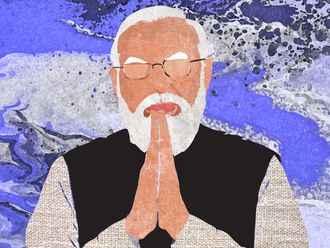
Print journalism is well and truly alive. Don’t believe anyone who tells you that social media has sounded the death knell for print. Remember, they said the same about radio when television stormed into our lives. Both are flourishing today. So, any epitaph for the print media can only be premature.
A look at the stats is enough to quell any fears of the death of newspapers. Print circulation in the West may be dwindling, but it is soaring in Asia. Global circulation grew by almost 5 per cent in 2016 and by 21 per cent over five years, driven mainly by the robust markets in India and other parts of Asia, according to a report by WAN IFRA (World Association of Newspapers and News Publishers).
The Arab world too is not lagging. An estimated 16.6 million copies of newspapers are sold in the region every day, making the circulation one of the highest in the world. In recent years, it grew by 1.4 per cent.
Television and radio too have a unique place in Arab societies. Part of the reason is the high illiteracy rate, estimated around 27 per cent by the Arab Organisation for Education, Science and Culture. Around 54 million people — nearly 16 per cent of the world population – in the region are illiterate. And that number will only spike given the wars raging in several Arab countries, particularly since nearly 14 million children do not attend school due to armed conflicts. There’s no denying that the mushrooming social media rocked traditional media around the world. Newspapers took note and established online portals to attract young readers. That hasn’t diminished the charm of print.
Newspapers provide a unique personal experience to the reader. The smell of ink, the feel of newsprint, and the strong headline fonts provide a sensory experience. News may be the primary focus of a paper. But there’s a social angle, besides features and human-interest stories. Obituaries, they are a popular column around the world.
In the Arab world, readers seek out the columns of favourite writers to gain some insight into politics. Obits are widely read in the region so that people can pay condolences to the bereaved. Offering condolences is an important social duty in Arab societies.
Most Arabs still trust the mass media. A study by the North Western University’s branch in the region found that Arabs are twice more likely than the Americans to trust mass media. Two-thirds of the respondents said they trusted mass media, but less than half believe the news that comes from social media. One of the reasons for the trust could be the effort that goes into news gathering and fact-checking before it is presented to the readers or viewers.
Since internet penetration in the region is very high, smart gadgets and its mind-boggling array of applications that push social media pose a serious threat to traditional journalism. Social media empowers ordinary people to drive the news cycle, and that means news sources reside in all corners of the earth.
If the expanded coverage gave power to social media, it was set back poor fact-checking. Facts, this is the Achilles heel of social media. In the quest for speed, the tenets of good journalism are compromised. This result is an incomplete picture that paved the way for the birth of fake news. And that has undermined the credibility of social media.
Fake news meant a loss of trust. The result was a slump in social media engagement at a time when internet penetration in the Arab region is rising. As mass media, including newspapers, television and radio, continued to hold sway, Facebook went down from 90 per cent penetrations to 74, and Twitter from 47 to 24 per cent. Only Instagram grew from 6 per cent to 39 per cent penetrations among internet users.
Social media’s citizen journalists are no match for trained journalists. As long as content is king, there will be demand for qualified journalists. That’s where quality trumps speed. That is why nearly 2.7 billion people out of a world population of 7.6 billion still read printed newspapers.
The recent Cambridge Analytica scandal dealt a body blow to Facebook, and the sale of personal data cast a huge shadow over social media platforms. The latest US proposal that calls for access to social media accounts for issuing visas has only made a bad situation worse. That hasn’t stopped the inexorable growth of social media users. From 2.28 billion users in 2016, it is expected to reach 3.02 billion in 2021. Nothing will stand in its way. Even quality.
Columnist Farhad Manjoo, writing for the New York Times recently, said: “I began to see it wasn’t newspapers that were so great, but social media that was so bad.”
As the world celebrates the 25th World Press Freedom Day today, I can say with conviction that print will survive for some more time. It won’t die in my lifetime at least. Newspaper and a cuppa in the morning, the ritual continues.











